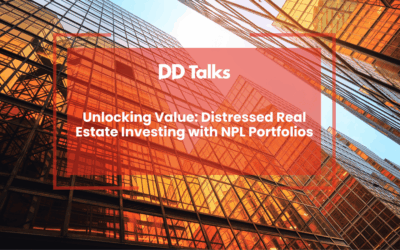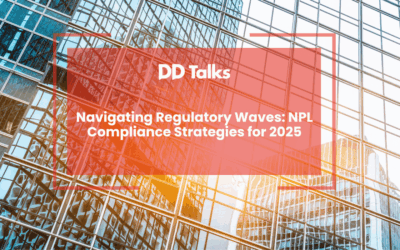Navigating European Distressed Real Estate and NPL Markets
- Market Dynamics: Non-Performing Loans (NPLs) create significant investment opportunities in European real estate, driven by regulatory pressures and economic cycles.
- Investment Strategy: Successful distressed property investments require comprehensive due diligence, including asset quality assessment, location analysis, and robust risk management.
- Risk Mitigation: Investors must carefully evaluate legal, market, and operational risks while maintaining flexible exit strategies and capital reserves.
- Emerging Trends: Digital platforms and evolving regulatory frameworks are transforming NPL portfolio sales and creating new investment entry points.
- Strategic Approach: Understanding the interconnection between banking regulations, economic conditions, and real estate markets is crucial for identifying high-potential distressed assets.
Table of Contents
- Understanding the Connection Between NPLs and Real Estate Markets
- Key Drivers of Distressed Property Opportunities in Europe
- How Do Banks Package and Sell Real Estate NPL Portfolios?
- Evaluating Investment Potential in Distressed Properties
- Managing Risks in NPL-Backed Real Estate Investments
- Best Practices for Acquiring Distressed Real Estate Assets
- Future Trends in European Distressed Real Estate Markets
Understanding the Connection Between NPLs and Real Estate Markets
Non-Performing Loans (NPLs) and real estate markets share an intricate relationship that shapes investment opportunities in the European banking sector. NPLs are loans where borrowers have failed to make scheduled payments for an extended period, typically 90 days or more. In the context of real estate, these loans are often secured by property collateral, creating a direct link between loan performance and property market dynamics.
Real estate serves as the primary collateral for many banking loans, particularly in commercial and residential mortgages. When these loans become non-performing, the underlying properties often enter a distressed state, creating opportunities for investors to acquire assets at discounted valuations. This NPL real estate connection forms the foundation for understanding market cycles and investment strategies in the distressed property sector.
Key Drivers of Distressed Property Opportunities in Europe
The European distressed property market is influenced by several key factors that create investment opportunities. Economic downturns, regulatory pressures on banks to reduce NPL ratios, and market cycles all contribute to the availability of distressed assets. Banks face increasing pressure to deleverage their balance sheets, particularly in Southern European markets where NPL ratios remain elevated.
Regulatory requirements, including Basel III standards and ECB guidelines, compel banks to maintain healthier balance sheets. This regulatory environment, combined with strategic NPL management initiatives, creates a steady flow of distressed property opportunities. Market cycles also play a crucial role, as property values fluctuate with economic conditions, creating entry points for strategic investors.
How Do Banks Package and Sell Real Estate NPL Portfolios?
Banks employ sophisticated approaches to package and divest their NPL portfolios. The process begins with portfolio composition, where loans are grouped based on characteristics such as asset type, location, and recovery potential. Valuation methods typically incorporate both current market values and potential recovery scenarios, considering factors such as property condition, market liquidity, and legal status.
The sales process involves multiple stages, from initial portfolio marketing to detailed due diligence. Banks often work with specialised advisors to structure transactions that appeal to different investor profiles. Documentation requirements are extensive, covering asset details, payment histories, and legal documentation to ensure transparent and compliant transactions.
Evaluating Investment Potential in Distressed Properties
Successful investment in distressed properties requires thorough analysis of multiple factors. Asset quality assessment involves evaluating physical condition, occupancy rates, and maintenance requirements. Location analysis considers market fundamentals, economic indicators, and development potential in the surrounding area.
Value recovery potential is assessed through detailed financial modelling, considering various scenarios for property improvement and market recovery. Exit strategies must be clearly defined, whether through property sale, refinancing, or long-term hold strategies. This comprehensive evaluation approach helps investors identify opportunities with the highest potential returns.
Managing Risks in NPL-Backed Real Estate Investments
Risk management is crucial in distressed property investments. Legal considerations include title issues, zoning restrictions, and potential claims from previous owners or tenants. Market risks encompass potential value fluctuations, changes in local market conditions, and broader economic factors affecting property performance.
Operational challenges include property management, renovation costs, and tenant relationships. Effective risk mitigation strategies involve thorough due diligence, professional property management, and maintaining adequate capital reserves. Understanding and actively managing these risks is essential for successful distressed property investments.
Best Practices for Acquiring Distressed Real Estate Assets
Successful acquisition of distressed real estate assets requires adherence to established best practices. Deal structuring should consider financing options, tax implications, and potential joint venture partnerships. Pricing strategies must account for both current market conditions and potential value appreciation through active asset management.
Documentation requirements must be meticulously managed to ensure legal compliance and protect investor interests. Negotiation tactics should focus on creating win-win scenarios that address both seller and buyer objectives while maintaining transaction feasibility.
Future Trends in European Distressed Real Estate Markets
The European distressed real estate market continues to evolve, influenced by changing economic conditions and regulatory frameworks. Market outlook suggests continued opportunities, particularly in regions with higher NPL ratios. Regulatory changes, including enhanced disclosure requirements and standardised NPL treatment, will shape future transaction structures.
Technology is increasingly impacting the sector, with digital platforms facilitating portfolio sales and asset management. Investment opportunities are expected to emerge in various property sectors, driven by market corrections and ongoing bank deleveraging efforts. Understanding these trends is crucial for positioning investment strategies in the evolving distressed property market.
Frequently Asked Questions
- What are Non-Performing Loans (NPLs) in Real Estate?
- Non-Performing Loans are loans where borrowers have failed to make scheduled payments for 90 days or more, typically secured by property collateral. These loans represent potential investment opportunities as banks seek to remove them from their balance sheets.
- How Do Investors Identify Promising Distressed Property Opportunities?
- Investors evaluate distressed properties by analyzing asset quality, location fundamentals, market conditions, potential value recovery, and exit strategies. Key factors include property condition, occupancy rates, economic indicators, and potential for value appreciation.
- What Risks Are Associated with NPL-Backed Real Estate Investments?
- Primary risks include legal complications, market value fluctuations, property condition challenges, tenant issues, and potential hidden liabilities. Successful investors mitigate these risks through comprehensive due diligence, professional management, and maintaining adequate financial reserves.
- Why Are European Banks Selling NPL Portfolios?
- Banks are motivated to sell NPL portfolios due to regulatory pressures, including Basel III standards and ECB guidelines that require healthier balance sheets. Selling these portfolios helps banks reduce risk, improve financial performance, and comply with regulatory requirements.
- What Strategies Do Investors Use to Acquire Distressed Real Estate?
- Successful strategies include thorough market research, strategic pricing, comprehensive due diligence, flexible financing options, potential joint ventures, and creating value through active asset management and property improvements.
- How Are NPL Real Estate Portfolios Typically Packaged for Sale?
- Banks group NPL portfolios based on characteristics like asset type, location, recovery potential, and market value. The sales process involves detailed marketing, extensive documentation, and structured transactions designed to appeal to different investor profiles.
- What Future Trends Are Expected in the European Distressed Real Estate Market?
- Anticipated trends include continued investment opportunities, increased use of digital platforms, evolving regulatory frameworks, and emerging investment sectors driven by market corrections and ongoing bank deleveraging efforts.
Top Tips for Investing in Distressed Real Estate Properties




0 Comments